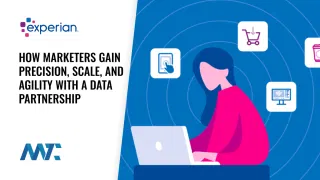SCV
SCV is the Acronym for Single Customer View

The aggregated, consistent, and comprehensive representation of a customer’s data across all touchpoints and interactions with a business. The goal of an SCV is to unify data from multiple systems—such as CRM platforms, marketing automation tools, ecommerce databases, help desks, and offline transactions—into a centralized record that presents a holistic profile of the customer.
This consolidated view typically includes personally identifiable information (PII), behavioral data (such as web browsing, purchase history, and engagement), channel preferences, consent records, and predictive attributes (e.g., CLV or churn risk). By resolving identity across channels—often using deterministic or probabilistic matching—an SCV ensures that businesses understand each customer as a singular, identifiable individual, regardless of device, session, or channel.
Why SCV Matters
Marketers, customer service teams, data analysts, and executives rely on SCVs to drive personalization, improve segmentation, ensure regulatory compliance (such as GDPR or CCPA), and enhance the overall customer experience. Without an SCV, data silos can lead to fragmented messaging, inconsistent service, and operational inefficiencies.
Key Benefits of a Single Customer View
- Improved Personalization: By understanding preferences, behaviors, and purchase patterns, marketers can tailor offers and messaging more effectively.
- Consistent Customer Experience: An SCV enables seamless transitions across channels—such as from online chat to in-store support—without requiring the customer to repeat information.
- Better Segmentation and Targeting: Rich, unified profiles enable easier definition and action on behavioral, demographic, and predictive segments.
- Data Accuracy and Cleansing: Centralized data management encourages deduplication and standardization, reducing errors and redundancies.
- Compliance Readiness: A centralized identity record enables the efficient management of consent and response to data subject access requests.
Challenges in Building an SCV
Achieving a true SCV is complex. Common obstacles include disparate data sources, poor data quality, lack of unique identifiers, and privacy concerns. Identity resolution technologies, customer data platforms (CDPs), and strong data governance practices are typically required to implement and maintain a reliable SCV.
SCV and CDPs
While SCV refers to the outcome—a unified customer record—a Customer Data Platform (CDP) is often the technology used to create it. CDPs are purpose-built systems that ingest data from various sources, perform identity resolution, and make unified profiles available for activation across marketing and service channels.
A Single Customer View is foundational for data-driven, customer-centric business strategies. It provides the clarity and context required to treat each customer as a known individual, delivering better experiences and higher returns across the lifecycle.



